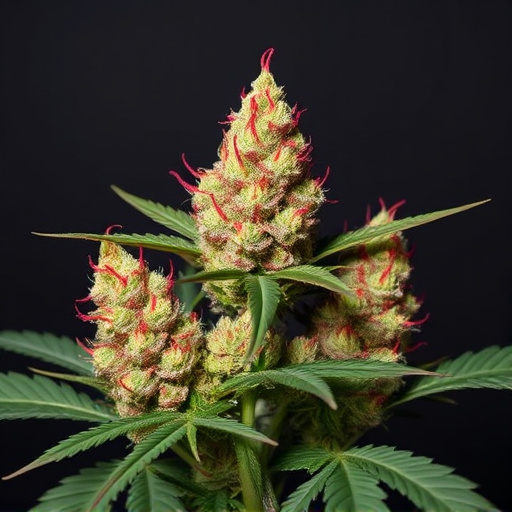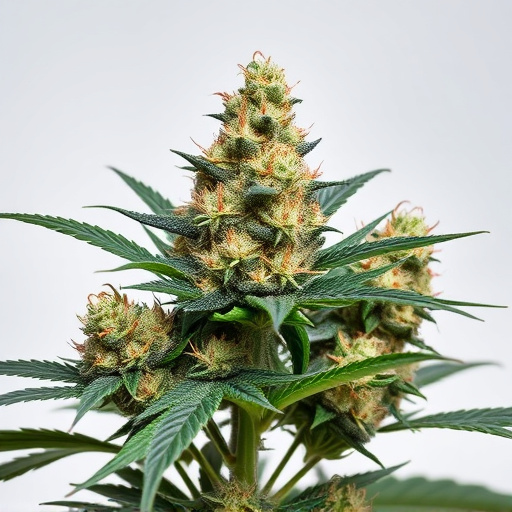Indica dominant cannabis strains, known for their relaxing and euphoric effects, vary in impact based on individual tolerance and dosage. Short-term benefits include stress relief, appetite stimulation, and muscle relaxation, but may also cause anxiety or paranoia with high THC levels. Long-term risks include dependency, mental health issues, cognitive impairment, and potential learning difficulties, especially for adolescents and young adults. Balanced cannabis use involves understanding strain attributes, responsible consumption, mindful practices like setting intentions, accurate dosing, and pairing strains with activities for desired outcomes while mitigating adverse reactions.
“Exploring the multifaceted impact of cannabis, this article delves into the intricate relationship between users and the plant, focusing on both short-term and long-term effects. While Indica dominant strains offer immediate relaxation, they may also contribute to temporary cognitive impairments and anxiety in some individuals. Long-term use introduces a complex web of potential consequences, from respiratory issues to mental health effects.
However, understanding these impacts allows for informed decision-making and responsible use. By navigating the available evidence, individuals can mitigate risks and enhance positive experiences.”
- Short-Term Effects of Weed: Indica Dominant Strains
- Long-Term Use and Potential Consequences
- Navigating the Impact: Mitigating and Enhancing Effects
Short-Term Effects of Weed: Indica Dominant Strains

The short-term effects of weed usage, particularly with indica dominant strains, manifest quickly and can vary depending on individual tolerance and dosage. Users often experience a sensation of relaxation and euphoria, commonly referred to as a “high.” This is attributed to the activation of neurotransmitters in the brain, leading to altered perception and heightened sensory experiences. Physical effects may include dry mouth, red eyes, increased appetite (often referred to as “the munchies”), and muscle relaxation. In some cases, users might also experience temporary anxiety or paranoia, especially with higher concentrations of THC, the primary psychoactive compound in cannabis.
Indica dominant strains are known for their sedative properties, making them popular among individuals seeking relief from stress, anxiety, and sleep disorders. The short-term effects can enhance relaxation, promote a sense of calm, and even induce mild sedations, which is why many people turn to these strains for evening or bedtime use. However, it’s crucial to understand that while indica dominant strains may offer temporary relief, regular consumption can lead to long-term effects, including potential dependencies and health risks.
Long-Term Use and Potential Consequences

Long-term use of cannabis, particularly with higher concentrations of THC found in modern indica dominant strains, can lead to various potential consequences. Regular consumption may result in tolerance development, requiring higher doses to achieve the desired effects, leading some users to unknowingly increase their intake over time. This increased usage could contribute to an elevated risk of mental health issues, including anxiety and depression, especially in those predisposed or vulnerable populations.
Additionally, prolonged exposure can impact cognitive functions, affecting memory, attention, and problem-solving abilities. Research suggests that chronic cannabis use may disrupt brain development in adolescents and young adults, potentially leading to difficulties in learning and social interactions. Other long-term effects include respiratory issues due to the inhalation of smoke or vapor, especially in those with pre-existing conditions like asthma. Furthermore, frequent users may experience motivation shifts, impaired decision-making, and reduced academic or professional performance.
Navigating the Impact: Mitigating and Enhancing Effects

Navigating the Impact: Mitigating and Enhancing Effects
The effects of cannabis can vary greatly depending on factors like strain, dosage, and individual tolerance. Indica dominant strains, known for their relaxing and sedative properties, may offer relief from anxiety and insomnia when consumed responsibly in controlled doses. However, these same traits can also lead to feelings of lethargy or disorientation if overconsumed. Balancing the mitigating and enhancing effects requires a nuanced approach.
Conscious usage, including setting intentions before consumption and mindful measurement, allows users to harness cannabis’s potential benefits while minimizing adverse reactions. For instance, combining indica dominant strains with activities promoting relaxation like yoga or meditation can enhance their calming effects. Conversely, sativa strains with more invigorating properties might be better suited for creative pursuits or physical activities, depending on individual preferences and needs.
In understanding the short- and long-term effects of weed, particularly focusing on indica dominant strains, it’s clear that while there are potential benefits, prolonged use can lead to unforeseen consequences. Navigating these impacts requires a balanced approach, mitigating negative effects while enhancing positive experiences. By recognizing the unique properties of different strains and their effects on the mind and body, users can make informed decisions, ensuring a safe and enjoyable relationship with cannabis.














